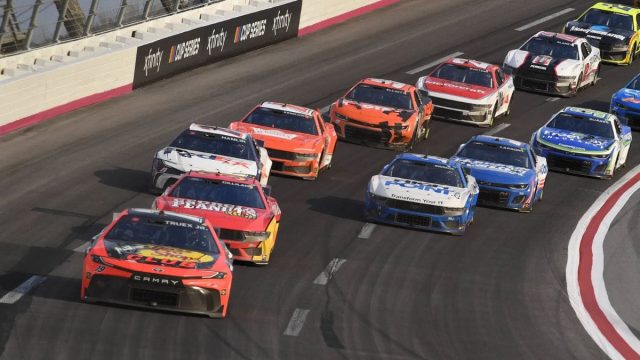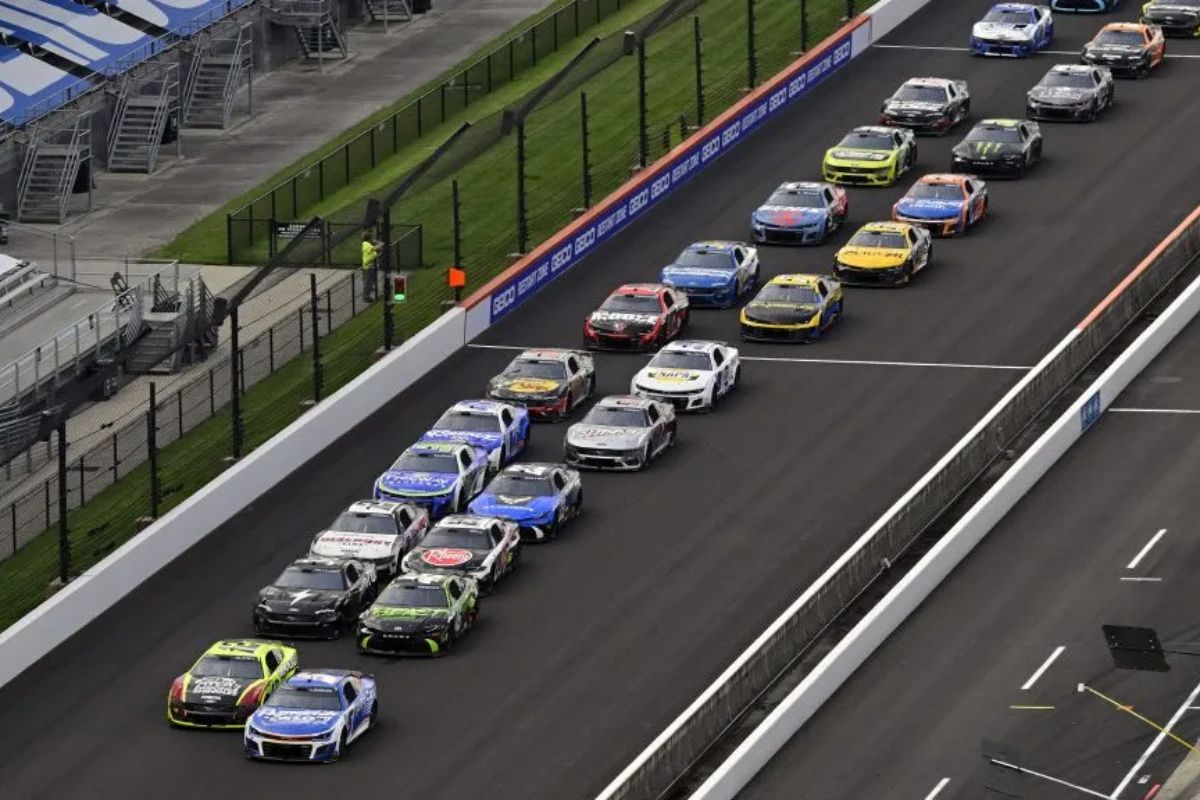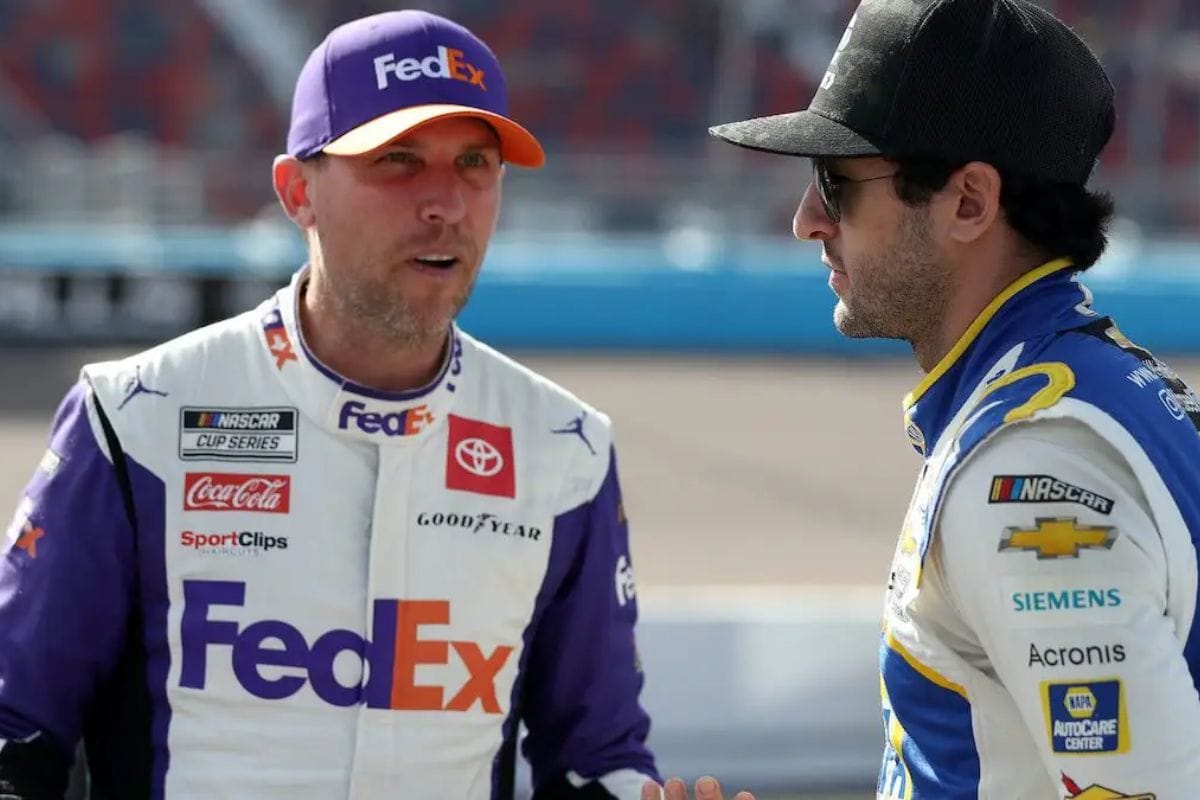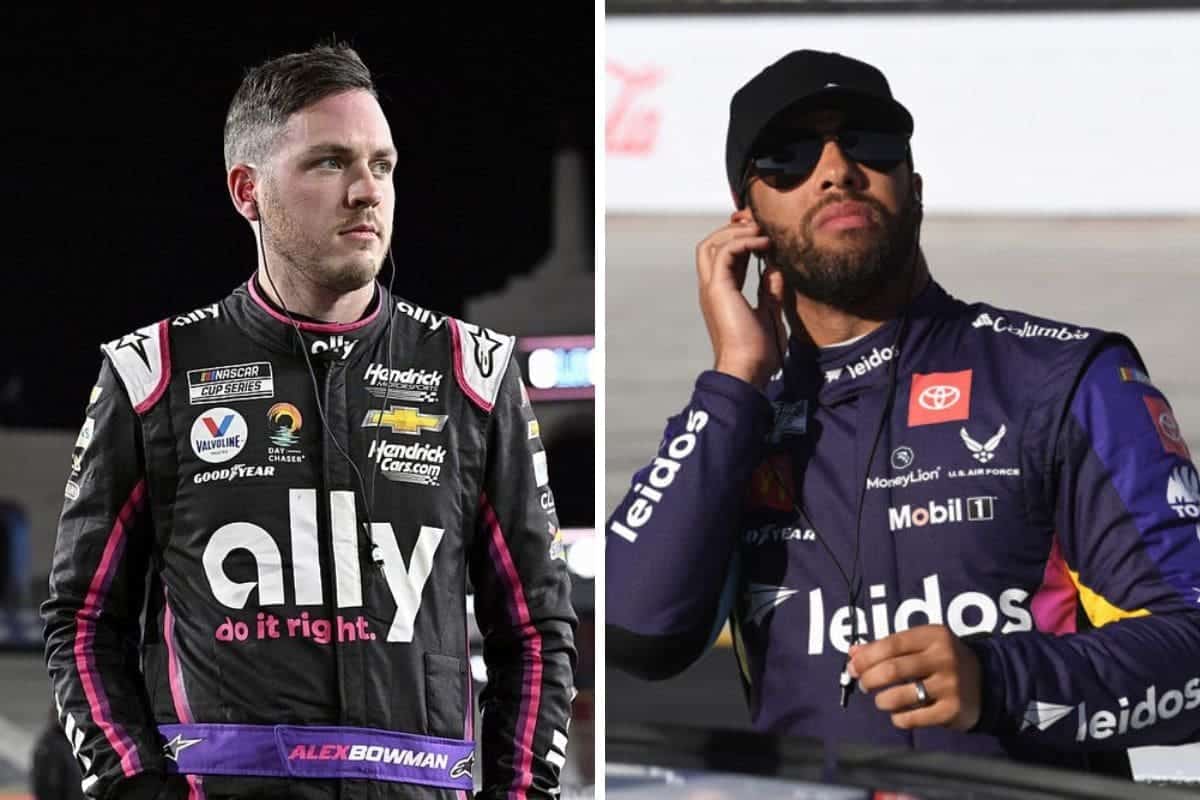NASCAR Scandals Unveiled: The landscape of NASCAR has been increasingly damaged by a series of scandals that reflect deeper systemic issues within the sport. From the contentious charter system that has fostered financial rivalries among teams to allegations of excessive spending and calls for transparency, the fabric of NASCAR is under scrutiny. Moreover, recent penalties—such as the notable fine levied against Bubba Wallace—have raised critical questions about the consistency and rationale behind enforcement practices. As these controversies unfold, they expose the intricate interplay between competitive integrity, financial motivations, and governance that begs for a closer examination.
Key Highlights
- The NASCAR Charter system, established in 2016, has sparked debates about financial stability and return on investment for teams.
- Denny Hamlin’s claims of $18 million needed for competitiveness raise questions about NASCAR’s spending culture and financial transparency among teams.
- Dale Earnhardt Jr. criticized NASCAR for inconsistent penalty enforcement, emphasizing the need for clearer guidelines and communication.
- Bubba Wallace faced a $50,000 fine for a deliberate collision with Alex Bowman, highlighting issues of driver conduct and sportsmanship.
NASCAR Charter Controversy
The NASCAR Charter Controversy encapsulates the complexities and challenges inherent in the franchise-like system established in 2016. The financial implications and evolving market dynamics have sparked debates among team owners and stakeholders regarding the true value and sustainability of these charters. Initially conceived to provide teams with guaranteed entry and financial stability, the charters have become a double-edged sword, revealing disparities in valuation and ownership dynamics.
The fluctuating market for charters, as evidenced by transactions ranging from Furniture Row Racing’s $6 million to 23XI Racing’s $21 million purchase, highlights the volatility of this asset class. Recent discussions surrounding Stewart-Haas Racing’s charter sales, reportedly valued at $25 million, accentuate the growing strain on teams to evaluate the return on investment associated with their charters. As teams grapple with the charter system’s implications, the disparity in perceived value further complicates negotiations and ownership strategies.
“23XI Is Interested In Getting A Charter Deal Done. On Jan. 1, 2025, We Don’t Even Have A Charter. You Can’t Buy Or Sell Something That Doesn’t Exist, In Our Eyes. So, We Have Two Charters ’Til The End Of This Year And Until We Get A Charter Agreement Done That’s All We Have … I’m Not Going To Put Myself In A Position To Where I’m Having To Shell Out Millions And Millions Of Dollars Every Year To Just Keep This Thing Going … So, It Has To Make Financial Sense And The Charter Agreement Needs To Be Better Than What It Is Certainly Before I Invest Any More Money In It.” – hamlin
Moreover, the future of charters remains uncertain, particularly with looming questions about the sustainability of the current framework. Stakeholders like Denny Hamlin emphasize the need for a more favorable charter agreement, indicating that the existing structure may not adequately support long-term investments. This ongoing discourse reflects broader concerns about the comprehensive health of NASCAR’s competitive landscape, suggesting that while charters provide stability, they also generate considerable tension among team owners grappling with financial realities.
Excessive Spending Controversy
Amidst the escalating financial tensions within NASCAR, the Excessive Spending Controversy has emerged as a vital topic, challenging traditional notions of competitiveness and financial sustainability among teams.
Denny Hamlin’s assertion that $18 million is necessary to maintain a competitive NASCAR team has ignited noteworthy debate, particularly in view of Landon Cassill‘s skepticism regarding these expenditures. Cassill’s challenge not only questions the veracity of such high figures but also reflects a broader concern over financial transparency within the sport.
“First, 18M Is Just For The Car On The Track To Put On This Show Each And Every Week (NO Driver) Seems As Though You Think It’s Excessive. Well We (Teams) Opened Our Books To NASCAR To Show What Exactly That Money Was Spent On And That It Was Not Excessive. (Nas Executives Agreed) You Mentioned That Anything We Make Beyond 18m Is “Profit”. That Would Be Incorrect. As Someone Who Started A Team From Scratch And Kept It As Lean As I Could, There Are MANY Other Depts At A Race Team That Are 💯 Necessary To“Business, Marketing, Sponsorship, Social Media, It Goes On And On. That All Cost A Significant Amount Of Money That Is Above And Beyond The Numbers Listed Above. That Money Is Spent As Not Only As A Necessity For Our Team But To GROW The Sport Thru On And Off The Track Activation. Hopefully This Is Helpful When Debating This Topic.” – Hamlin
This dispute reveals a dichotomy between the perceived financial necessities and the actual spending practices of teams. While Hamlin emphasizes that the figure is recognized by both teams and NASCAR executives as fundamental for operational viability, Cassill argues that the current financial model promotes excess rather than efficiency. His perspective suggests that teams could potentially improve profitability by reassessing their spending strategies, particularly in areas such as engineering staffing and travel logistics.
The implications of this debate extend well beyond individual team finances. Cassill’s critique highlights a prevailing culture within NASCAR that equates success with considerable financial outlay, a notion that may inhibit true competitive balance. As teams grapple with spiraling operational costs, a reevaluation of expenditure practices may not only foster a healthier economic environment but also promote a more equitable competitive landscape.
Dale Jr. Slams NASCAR on Chase Elliott’s Penalty
While Dale Earnhardt Jr.’s critique of NASCAR’s penalty enforcement highlights the inconsistencies in officiating, it also accentuates a pressing need for clearer guidelines to guarantee fair competition among drivers. The penalties levied against Chase Elliott and Brad Keselowski during the Brickyard 400 emphasize a growing concern regarding NASCAR’s approach to rule enforcement.
“I’ve Seen So Many Cars Go Where They Went. This Is Something That I Have A Little Bit Of A Problem With. It’s Never Really Been Something That Was Heavily Officiated Before, To Pop A Couple Of Drivers In The Middle Of The Race When Others We Know Are Probably Doing The Same Thing, It Just Felt Loosey-Goosey. It’s Not A Great Look. The #6 And The #9 Should Have Gotten A Warning And Said Specifically, The Last White Line Is The One We Do Not Want You To Cross So Stop, Next One Will Be A Penalty.” – (Dale Jr.)
Earnhardt Jr. articulates a noteworthy point: the historical laxity in officiating such violations raises questions about the timing and rationale behind these recent penalties. He argues that mid-race penalties, rather than warnings, detract from the sport’s integrity. His comments suggest that drivers often operate under ambiguous guidelines, leading to potential misinterpretations of acceptable racing behavior.
| Aspect | Details |
|---|---|
| Drivers Penalized | Chase Elliott, Brad Keselowski |
| Infraction | Blend line violation |
| Earnhardt’s Proposal | Implement warnings before penalties |
Earnhardt Jr.’s call for more explicit communication regarding track boundaries, especially concerning the last white line, resonates with many in the racing community. By advocating for preventative measures, such as clearer warnings, he stresses the need for a consistent framework that not only maintains competitive integrity but also fosters a more equitable racing environment. Fundamentally, Earnhardt Jr.’s insights reflect an essential dialogue about the future of NASCAR officiating standards.
Controversy at Brickyard 400
A series of contentious decisions during the Brickyard 400 has ignited fervent discussions regarding the reliability and fairness of NASCAR’s officiating, particularly following the controversial timing of a caution flag that emerged after the race leader had already crossed the finish line. This incident raised considerable questions about the consistency of NASCAR’s regulatory framework, as the caution’s issuance immediately post-finish is a rare occurrence that has thrown the integrity of the race into question.
Critics argue that the late caution may have altered the final classification by benefiting Kyle Larson, who capitalized on the confusion while Ryan Blaney, poised to take the lead, was left frustrated and bewildered. Blaney’s pointed remarks about the situation encapsulated the discontent among drivers, as he lamented the promotion of a competitor who was not in the ideal position to win. His assertion that the decision resulted in an unfair advantage highlights the broader implications for competitive equity within the sport.
“There’s No Way They Should’ve Let That Go Green. That’s Ridiculous. They Just Gave It To [Larson]… Gave It To F**King Golden Boy.” – (Blaney)
With the governing body under scrutiny, there is an urgent call for a reassessment of officiating protocols to guarantee uniformity in rule application. The Brickyard 400 has become a case study in the delicate balance between maintaining race excitement and upholding the principles of fair competition.
As NASCAR navigates these turbulent waters, the need for transparency and accountability in decision-making processes has never been more pronounced, emphasizing the crucial role that officiating plays in preserving the essence of the sport.
Bubba Wallace Fined at $50,000 after clash with Alex Bowman
Bubba Wallace faced a noteworthy $50,000 fine following a deliberate collision with Alex Bowman during the cooldown lap of the Chicago Street Race, an incident that has reignited discussions about driver conduct and the enforcement of NASCAR’s Member Code of Conduct. This clash, which occurred as Bowman celebrated his initial victory since 2022, sharply demonstrated the growing animosity between the two drivers.
“The Debate Will Be, Will Bubba Be Penalized Or Fined.” – (Dale Jr.)
The incident unfolded on the 25th lap when Bowman inadvertently clipped Wallace, sending him into a spin and effectively eliminating his chances for a win in this rain-shortened race. Wallace’s subsequent door-slam against Bowman’s car was not merely an aggressive action but a manifestation of his pent-up frustration. The ramifications of this action have been considerable, prompting NASCAR officials to take decisive action.
“… Some People Have Said, You Know Jeff Gluck For Example, Said That The Precedent Was Set Back In 2006 When Carl Edwards Swiped At Me At Michigan And Carl Got $20,000 Or Something Like That. Carl’s Swipe At Me Was A T-Bone, It Was A Really Hard Hit.”
“That Fine For Him Was $20,000. This Wasn’t Anything Like That. … I Do Like The Old Throwback Idea That If You Piss Me Off Enough, I Wanna Be Able To Drive Up To Your Car And Door You A Little Bit.” – (Dale Jr.)
Key points to reflect on regarding this incident include:
- Code of Conduct Violations: NASCAR’s regulations are designed to maintain a level of sportsmanship; Wallace’s actions were deemed a breach.
- Historical Precedents: Comparisons have been drawn to past penalties, such as Carl Edwards’ $20,000 fine in 2006 for a more severe collision, raising questions about consistency in the application of penalties.
- Driver Accountability: This incident highlights the ongoing debate within the NASCAR community about how drivers manage their frustrations and the potential consequences of their actions.
News in Brief: NASCAR Scandals Unveiled
The controversies surrounding NASCAR, from the charter system to financial transparency and penalty enforcement, highlight the intricate balance between competition and governance within the sport.
The ongoing disputes and reactions from prominent figures emphasize the necessity for clearer regulations and equitable treatment among stakeholders.
As NASCAR navigates these challenges, the implications for its integrity and public perception remain substantial, necessitating a reevaluation of policies to foster a fair and transparent racing environment.
ALSO READ: NASCAR Drivers Who Broke Their Winless Drought in 2024: The Year of Epic Comebacks!



